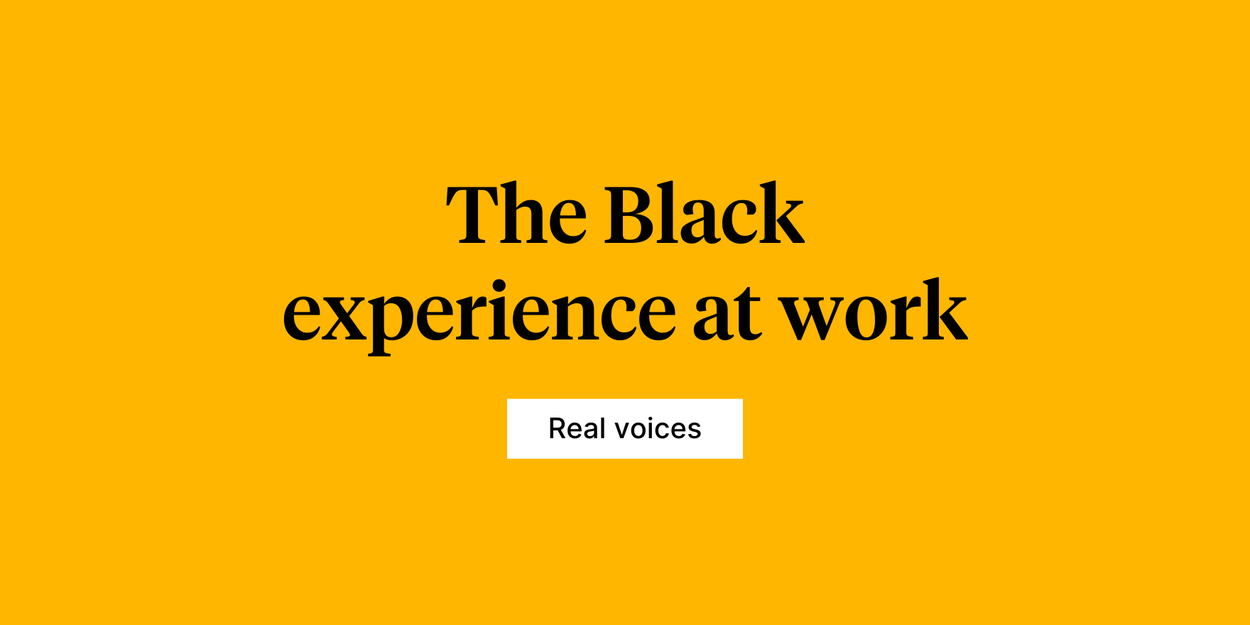
Written by
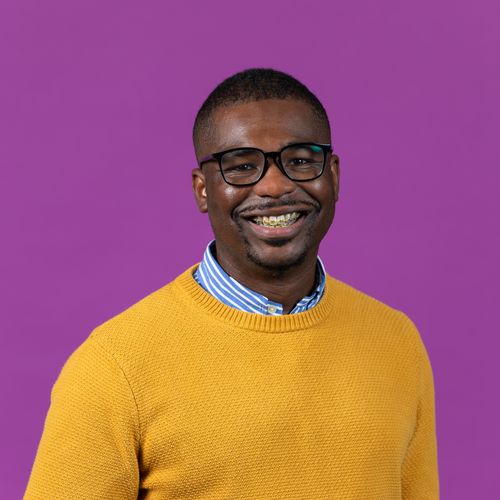
Senior Community Manager, Culture Amp
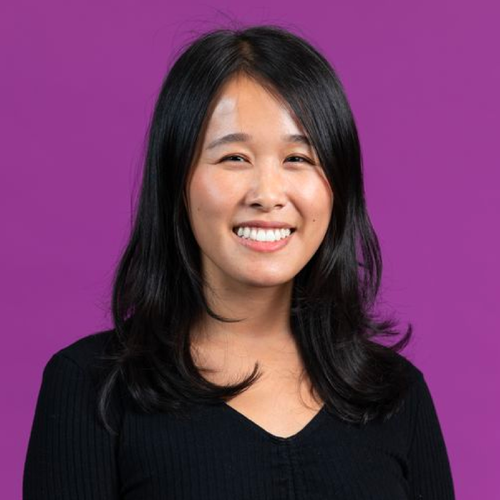
Senior Content Marketing Manager, Culture Amp
In this blog
At Culture Amp, our mission is to build a better, more equitable, and inclusive world of work. At the heart of this mission is the question – What does a better world of work look like to you?
In our Real Voices series, we seek to amplify and humanize the experiences of individuals whose voices and views are often underrepresented not just in work, but in the wider world. In this first part of our series, we’re putting a microscope on the hearts of Black employees to ask how they’re currently navigating the workplace as Black professionals at the intersection of many identities.
We invited six Black professionals from the Culture First community to share their honest thoughts on the following questions:
- In what ways do organizations inadvertently contribute to the paradox of invisibility and hypervisibility in the workplace?
- What does a better world of work like to you?
Setting the stage: Navigating hypervisibility and invisibility as a Black professional
In a society that normalizes whiteness, people of color have to contend with a uniquely uncomfortable dual reality: that of being hypervisible and invisible at the same time. For Black professionals, this experience is especially pronounced because Blackness is often posited as the opposite of whiteness, and there is an unspoken but well-established bias for a “professionalism” rooted in whiteness.
In the article “Professionalism as a Racial Construct,” Leah Goodridge elaborates:
Professionalism is a standard with a set of beliefs about how one should operate in the workplace. While professionalism seemingly applies to everyone, it is used to widely police and regulate people of color in various ways, including hair, tone, and food scents.
It is precisely this expectation of “professionalism” that puts people of color between a rock and a hard place when it comes to moderating their visibility (i.e., being seen fully and accurately by others) in the workplace.
By hypervisible, we mean that a person of color is put under a magnifying glass and closely scrutinized because of their perceived differences. Their mistakes often become magnified because their peers subconsciously (or consciously) seek evidence that confirms their (biased) perceptions of that person.
Consequently, people of color are compelled to actively change how they present themselves in the workplace to lessen the glaring spotlight of hypervisibility. As you may imagine, this is an exhausting experience at odds with “bringing your whole self to work,” but it’s also one that many Black professionals find unavoidable. For example, one survey found that Black employees are nearly 3x more likely to code-switch than White employees, with nearly half of surveyed Black employees agreeing that code-switching is a necessity at work.
This sentiment (i.e., stay in your lane) leads us to the flip side of hypervisibility: invisibility. As Ralph Ellison wrote in Invisible Man, “I am invisible, understand, simply because people refuse to see me.” People of color experience invisibility in the workplace in many ways, such as:
- Being overlooked in favor of White colleagues for promotions, with one study finding that Black and Latinx workers are often stuck at the lowest rung of the workplace.
- Having your contributions minimized and/or attributed to other team members, with one study finding that Black employees are more likely to be penalized for self-promotion than White, Latinx, and Asian employees.
- Being treated as homogenous or interchangeable with another coworker (i.e., being mistaken for another Black colleague)
As many professionals of colors have learned, the paradox of hypervisibility and invisibility is a problem that wasn’t made to be solved. We have to avoid standing out or speaking up too much, but when we’re passed over for growth opportunities, we’re told it’s “our fault” for not amplifying our achievements enough. We’re told we should feel comfortable sharing our honest feedback, but we know it’s only acceptable if it’s palatable to whiteness.
True visibility is an illusion because, more often than not, “belonging” goes hand-in-hand with erasure for a hypervisible individual in a majority-White American workplace. Our proximity to whiteness will never make us white, nor will it shield us from experiencing everyday microaggressions. To believe otherwise puts us at risk of becoming a token employee.
So, what is there to be done? In the next section, we asked six Black professionals about their experiences navigating “professionalism,” hypervisibility, and invisibility in the workplace.
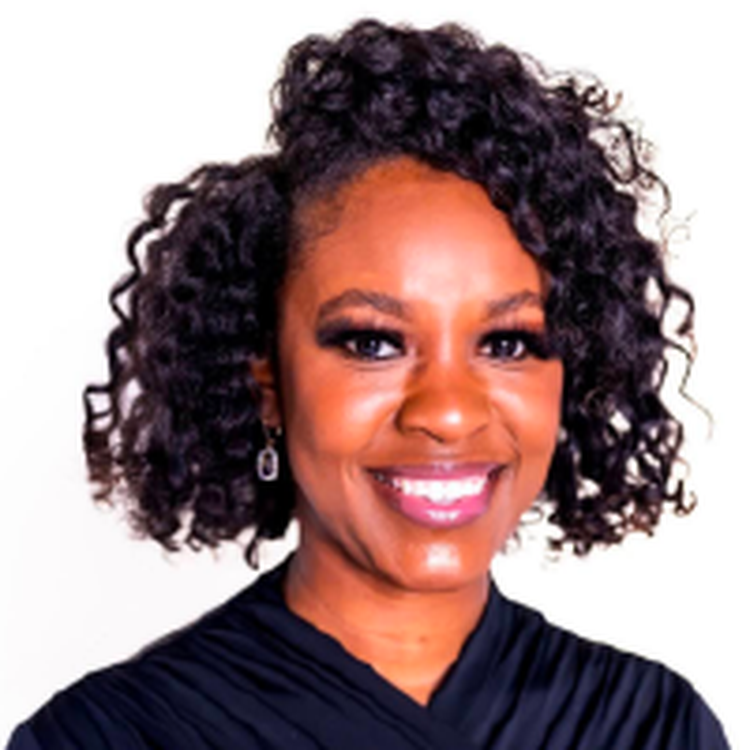
Bren Brown
I am a neurodivergent, queer Black woman based in Atlanta, GA, with a global professional and personal perspective. As a first-generation, non-traditional college graduate who climbed the corporate ladder to a Director-level role, my lived experiences have taught me how to leverage learning and networking relationships to access better opportunities for myself, and for others. I believe we, as humans, (especially BIPOC folx), are entitled to equitable access to success and generational security.
In what ways do organizations inadvertently contribute to the paradox of invisibility and hypervisibility in the workplace?
Organizations inadvertently contribute to the paradox of invisibility and hypervisibility in the workplace by not taking a transparent and measurable stance on supporting the multitude of intersectionalities and invisible identities of their employees. The term code-switching instantly comes to mind.
“Code-switching” involves adjusting one’s style of speech, appearance, behavior, and expression in ways that will optimize the comfort of others in exchange for fair treatment, quality, service, and employment opportunities. It creates a systematic barrier that prevents folks (who don’t resemble the dominant company culture) from showing up to work as their best authentic selves.
What I hear is, "Tone down your Blackness to succeed at work, Bren.” I was taught to “mind my manners at work” and treat everyone with respect as a Southern adolescent. However, what I was not prepared for was the constant questioning and overthinking of my blackness in interactions and appearance in the workplace. My internal branding at past jobs required that my disposition be agreeable and calm because being labeled “aggressive” or “unapproachable” could have dire consequences on my career progression. Although my employers did not “force” me to code-switch, they did facilitate an environment where code-switching was a requirement to survive in my own skin.
What does a better world of work like to you?
Imagine a workplace that can inherently remedy its interpersonal conflict and trauma without it spreading to alter a company’s cultural DNA. That is a better world of work for me.
I often see a genuine lack of compassion for one another in our workplaces, from the individual contributor level to the organizational level. I believe that shifting this paradigm is simple. We leverage basic interpersonal skills with a twist: Let us treat others how we want to be treated, not how we were treated, by moving with the intentionality of kindness and positive intent in how we communicate, collaborate, and support. Think about how often we say to ourselves, “That’s not my job,” or feel that our teammates or leadership only give the bare minimum effort. We have all either felt this way or have had someone feel this way about us.
Then, there’s the question of who is responsible for quantifying an abstract and intangible cultural artifact like “feeling supported” at work. My answer is: Everyone, because it’s a team effort! Organizations should create environments that foster psychological safety by implementing policies that inform conflict management, communication/branding service level agreements (SLAs), employee resource groups, and interpersonal skills training opportunities. On the other hand, employees should actively inform, utilize, and give feedback on the company resources to bridge the current cultural gap between organizations and employees.
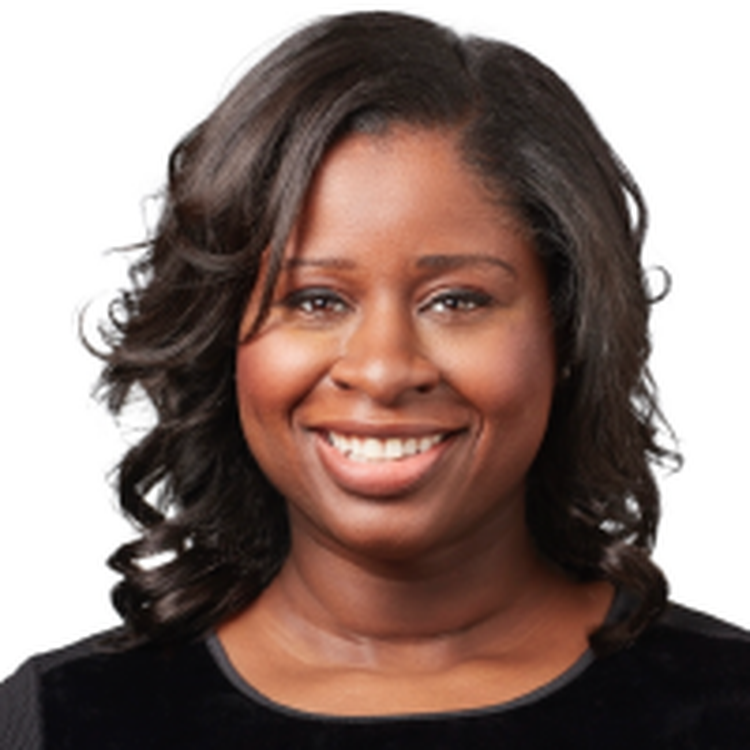
Cassandra Rose
I am a Brooklyn girl, born and raised. I am the proud daughter of Haitian immigrants who encouraged my love and learning and gave me the grit and resources to graduate from college at 19. Having held Human Resources roles at multibillion-dollar global brands and unicorn startups, I've developed proven strategies that positively impact the physical, mental, and financial wellbeing of employees.
In what ways do organizations inadvertently contribute to the paradox of invisibility and hypervisibility in the workplace?
One of my first jobs out of college was as a recruiter with a Fortune 100 company with a robust college recruitment program. When reviewing the offer letters for these recent grads, I noticed the majority of these hires received sign-on bonuses. When I asked my manager why people with limited work experience would receive significant sign-on bonuses, she informed me the intent was to have them invest in a professional wardrobe. My mom always told me to dress my best – no matter the occasion. As a matter of fact, I wasn’t even allowed to wear jeans until I got to high school. So, seeing a company take that level of investment in the junior employees solidified to me that the way you dress in the workplace matters. But what about the employees who are not fortunate enough to come through this program? Or the employees who are now spending unexpected funds on dry cleaning and new clothing to keep up with their peers?
When you’re one of the few people of color in the office, it can feel like a spotlight is on you. So not only do I feel the pressure of representing myself at the highest level at all times, but I also feel the pressure of having to not just meet, but potentially exceed the dress code as well. A dress code that isn’t always inclusive of my hair texture, my cultural apparel, or my individual sense of style. By assimilating and adopting the fashion sense and hairstyles reflected around me, I somehow felt like I fit in more. Then, suddenly, I became the standard that others close to my skin tone should be “more like.” It was a daunting and heavy load I felt I had to carry.
Over the years, as I have climbed the corporate ladder, I have felt more at liberty to wear the hairstyles, jewelry, and clothing that more accurately reflect me. I hope that I can empower those who come after me to reflect more on their personhood at work, especially in how they dress.
What does a better world of work like to you?
A better world of work needs DEI teams and tools that can measure the disparate impact of workplace policies and values and make them more equitable. By measuring the disparate impact of workplace policies on specific communities and revising them to mitigate harm, we can systematically enhance inclusion and belonging.
I genuinely believe that most people have good intentions when setting up the policies and crafting a culture of a workplace. However, very rarely do we go back and evaluate what policies, practices, and values have hindered us from attracting and retaining employees from marginalized communities.
For example, if we create a culture where we host several team-building activities after work hours, we may believe we are creating programs where all employees have a chance to connect. However, we may end up excluding employees who are caregivers, employees who have long commutes as a result of their socioeconomic status, employees with disabilities if the activities or venues may not fit their needs, and the list goes on. Instead, it would be more equitable and effective to prioritize having the majority of team-building events take place during working hours and on-premises, as this approach would significantly improve the chances of all employees having a chance to connect. By using an equity lens across our organizations, we can make great strides in delivering a better world of work for all.
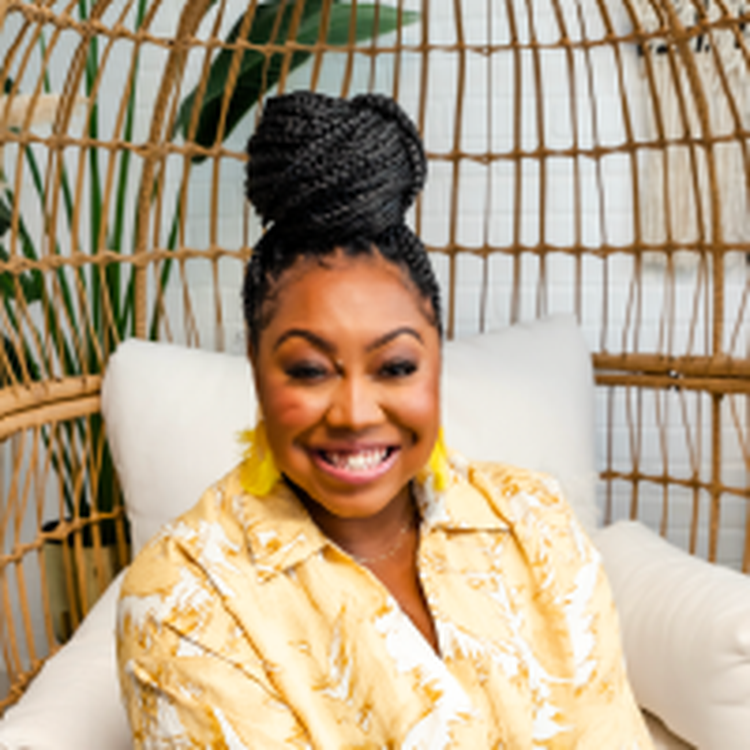
Danette “Danni” Buie
Hey there! I hail from the vibrant city of Chicago, where the real magic lies in the lesser-known corners rather than the glossy postcards. As a Diversity Coach, Talent Development Strategist, and all-around Life and Wellness Architect, I'm fueled by the belief that true inclusion means creating abundant space for everyone to flourish. My passion for this work isn't just professional – it's deeply personal, shaped by my experiences as a Black woman, first-generation college graduate, parent, and proud member of the LGBTQ+ community.
In what ways do organizations inadvertently contribute to the paradox of invisibility and hypervisibility in the workplace?
In my professional journey, I've encountered the full spectrum of visibility, from feeling invisible to being hyper-visible. Reflecting on my upbringing, my mother instilled in me the belief that I'd have to work twice as hard to succeed and that education was my path to a better life. She exposed me to diverse perspectives and experiences, emphasizing the unique challenges I'd face as a Black woman.
Now, decades later, those lessons still resonate. For example, despite my global impact within a particular company, I faced obstacles like being passed over for a promotion. While I was consistently the go-to problem solver, I've realized that success isn't solely about effort – it's also about how one's “impact” is perceived and measured. Unfortunately, I've observed that the criteria for success often vary based on one's identity, leading to different standards and expectations for individuals who look like me. These experiences have highlighted the disparities in how performance is evaluated and recognized, underscoring the importance of addressing biases.
It's common when these occurrences continue to happen that you feel upset, disappointed, or hurt, especially when you give so much, intellectually, emotionally, and physically, only to realize that the system wasn't designed for people like me. But yet, as Maya Angelou said, Still I Rise. Despite this realization, I acknowledge my worth and capabilities, refusing to let the system dictate my path or undermine my confidence, which is why I remain committed to advocating for inclusion and fairness, drawing from both my personal experiences and professional insights to drive meaningful change.
What does a better world of work like to you?
A better world of work is an equitable world. It’s a world where diversity and inclusion are not just buzzwords but integral parts of organizational culture. It's a world where Black and Latinx women are represented and equipped to thrive in leadership roles, where individuals with different cognitive abilities are valued for their unique perspectives rather than penalized.
Equity in pay is paramount, ensuring that all employees, regardless of gender or ethnicity, receive fair compensation for their contributions. Additionally, it's a world where working parents are supported with flexible policies that allow them to balance their professional and personal responsibilities without sacrificing career advancement opportunities. In this world, organizations prioritize not only profits but also the wellbeing and growth of their employees, fostering environments where everyone feels empowered to be who they want to be at work and contribute meaningfully to the success of the organization.
Ultimately, a better world is an equitable world where everyone has equal opportunities to succeed, regardless of their background, identity, or abilities, and where our differences are celebrated as a strength rather than an obstacle.
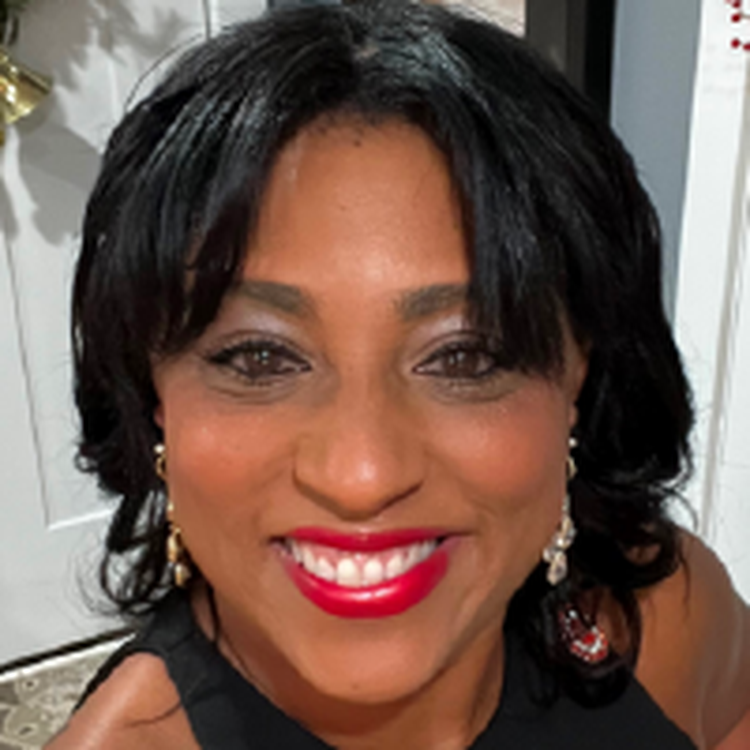
Del Smith
A native East Coast, I currently reside in what’s commonly called the “DMV” in the USA (specifically, Maryland). Having experienced triumphs, trials, and tremendous blessings, I proudly wear the hard-earned badge of “RESILIENCY.” A lifelong creative, my greatest accomplishments are the things money can’t buy – the humans I’ve created and shared with the world! I see opportunity in every one of life’s challenges and blessings while striving to help others do the same. I try to live each day by my favorite corporate slogan, “Just Do It,” because life is short!
In what ways do organizations inadvertently contribute to the paradox of invisibility and hypervisibility in the workplace?
Organizations contribute to the paradox of invisibility/hypervisibility in the workplace inadvertently and, sometimes, overtly. My first experience with this concept was early on, during my first post-baccalaureate career search. I proudly listed my membership in a Black sorority on my resume. Despite meeting every listed requirement and the postings being re-listed week after week in the newspaper, I found myself declined for EVERY entry-level engineering job I applied for. I was then encouraged to take my sorority membership off my resume by a tenured professional black woman at one of the organizations to which I’d applied to get past the initial screening. This sickened me.
As my career grew years later, I was, on more than one occasion, “desirable” enough to be hired and contribute to the company’s diversity numbers (in two categories), only to be consistently disregarded in meetings and passed over for promotions with consistent reviews of “exceeds expectations.” On more than one occasion after being rejected, I was told, “We just went with the other candidate,” and promised that my time would come one day. Noticeably, all of these selectees were both male and White. These systems of inequity often left me feeling inadequate and desperate to add to my education and credentials in order to succeed. Each time, I ended up needing to change organizations to grow in my career.
What does a better world of work look like to you?
My vision for a “better world of work” is one where executives and leaders of all levels intentionally create workplaces where the employees under their leadership are humanized and thrive. A “better world of work” includes one where business professionals are empowered to discern when they are more productive away from the busy office, and when in-person collaboration and connection strengthen their work product so that they can experience a better, healthier “work/life blend.”
My vision for a “better world of work” is one where salaries are commensurate with talent and hard work equitably across the organization, and salary ranges are advertised transparently within job postings. A “better world of work” is one where workplace culture normalizes learning through mistakes, open and honest communication, active inclusion, and a growth mindset. A “better world of work” is one that is both representative and appreciative of (vs. simply tolerant of) the multidimensions of race/ethnicity, age, gender, orientation, physical/cognitive ability, and personality style.
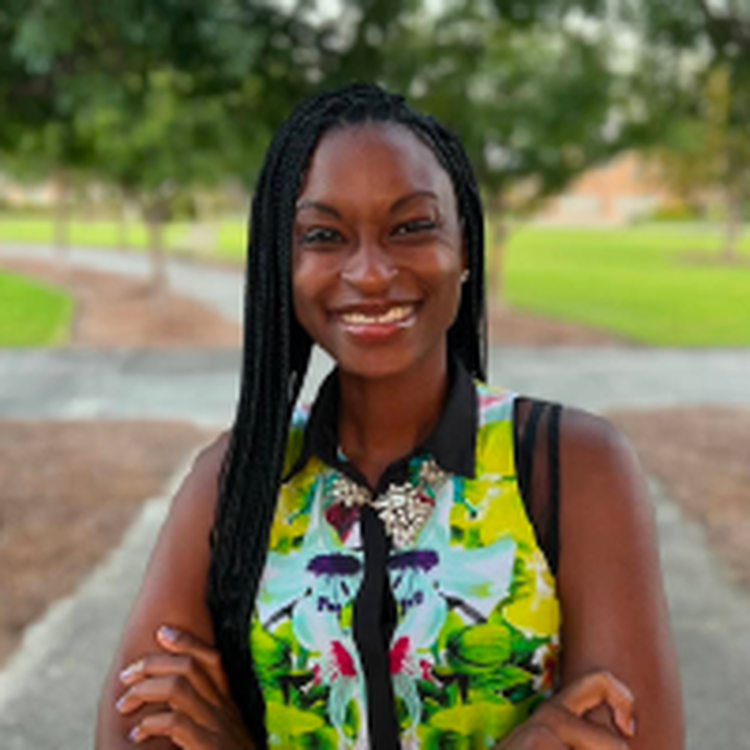
Joi Gladman
My name is Joi Gladman, and being born at the intersection of Black History and Women's History Month lets me know that God has a calling on my life. I am a proud Howard University Alum, and my parents, grandparents, great-grandparents, and ancestor’s ethics of love, hard work, dedication, and resilience are etched into every fiber of my being. My passion and purpose lie in ensuring that all of the little “Joi’s” that come behind me do not have to mentally, emotionally, and physically sacrifice their well-being for a seat at an arbitrary table but are rather empowered to construct the entire building.
In what ways do organizations inadvertently contribute to the paradox of invisibility and hypervisibility in the workplace?
Since I was a little girl, I have become very familiar with being the “first.” I have been the first Junior Deaconess of my family church, the first African-American Policy Analyst, the first African-American Vice President, and the first African-American Head of Recruiting. And with being the “first” comes the internal and external pressure to over-achieve and to always climb the invisible corporate ladder no matter the toll it takes on you emotionally, mentally, and physically.
Early in my career, I remember being in a particular work environment so toxic that a Senior Leader began to blast old-time gospel music. He cheerfully told me he enjoyed listening to his “old negro spirituals” and laughed as he walked back into his office and closed the door.
As a young professional, bright-eyed, fresh out of undergrad, and afraid of losing my career, I continued to work. In that scenario at that specific workplace, I felt both hypervisible and invisible. Hyper visible because I knew my reaction would be judged, and invisible because I knew that going against a senior leader would be my word against his. At that moment, I felt helpless, and until now, I have never shared it with anyone, not even my family. This is the first time I have shared this story publicly, but that is because today, I feel empowered. There is something very freeing and powerful in sharing my story, and this very story and the countless experiences I have had with inequality, hypervisibility, and hyper-invisibility have empowered me to embark on a journey to redefine my version of success.
What does a better world of work like to you?
No matter how we define, redefine, or deconstruct diversity, equity, inclusion, and belonging or the policies corporately implemented in the workplace, I believe a better world lies in solutions that dismantle structures, power dynamics, and safe spaces for workplace bullies. Only by undoing the systems of oppression can we ensure that human beings will not continue to be exploited to uphold the construct of supremacy.
If I had a magic wand, an ideal work world would encompass genuine humans passionate about the work, mission, and vision of said organizations. The work world would ensure diversity, equity and inclusion of thought from individuals with all different backgrounds. In my ideal work world, company websites would not just display diversity as a landing page on their website but really ensure every aspect of their organization actually reflects it, starting with their C-suite.
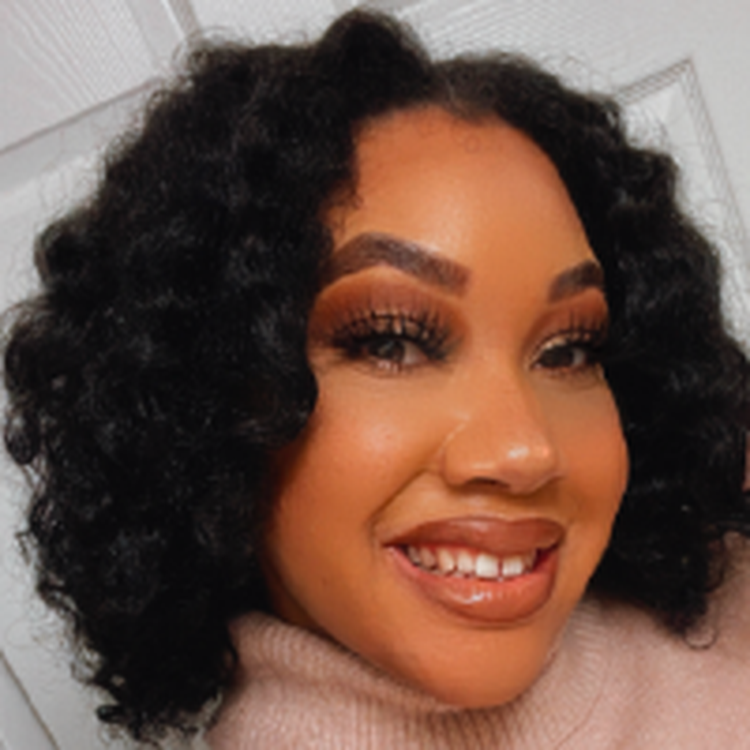
Naeemah Alhark
In Hayward, CA, USA, born and raised, I pride myself in being a community college and YearUp (YUBA) graduate, a people professional, and a product of public education. I navigate ambiguity by carrying the grit, strength, and resilience of my ancestors. My passion lies between all things People & Culture (HR + DEIB), advocacy, and business. I believe in bridging the opportunity divide by leveling up experiences through inclusivity and equity.
In what ways do organizations inadvertently contribute to the paradox of invisibility and hypervisibility in the workplace?
Organizations contribute to this paradox by unconsciously forming a structured leadership and teams of familiar personalities. This structure leaves no room for true DEIBA, growth, and innovation in the workplace. Instead, this limits the accessibility of underrepresented employees to thrive in the workplace. Early in my career, I was part of a fraternity-like team. If you did not go to happy hours after work, play beer pong between calls, share the same interests, look, dress, or talk like your teammates, your superpower was invisibility. Hypervisibility comes with “performance flaws” and not fitting the “team culture” because it’s easiest to recognize and scrutinize the unfamiliar. This structure widens the opportunity divide, distancing equity and inclusion.
What does a better world of work look like to you?
A better world of work requires leadership to fully embrace getting comfortable with the uncomfortable by challenging set structures. This looks like embracing employees with unique backgrounds and unfamiliar personalities, inclusive of any race, ethnicity, culture, religion, and gender. This creates a safe space for employees to feel like they belong, encourages innovation, and amplifies efficiency in the workplace. I believe that all employees are the best version of themselves when they’re empowered to unapologetically express their strengths and interests. I thrive when I’m part of an organization and team that accepts me for being Naeemah. A better world of work starts with this.
A better world of work is a more equitable world of work
The road to diversity, equity, and inclusion is a long one, but it’s certainly one worth walking. So, if organizations are serious about building a better world of work, they need to interrogate their policies and systems and assess the ways in which professionals of color, especially Black professionals, are made invisible/hypervisible. Individuals, too, must acknowledge and correct their biases and perceptions of those “who are/seem different.”
If DEI is a priority for your company, consider the following:
- How your organization may or not be inadvertently fostering a culture that rewards code-switching
- The importance of calibrations in ensuring that employees are fairly and equally evaluated and rewarded for their performance
- Whether employees from underrepresented backgrounds are growing at the same rate as others in your company? – i.e., is your development strategy equitable?
- Whether leaders are held accountable for microaggressions or other toxic behaviors
- The importance of hiring, retaining, and promoting employees from underrepresented backgrounds in creating a culture of meaningful belonging
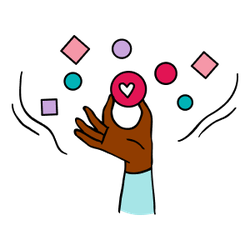
Double down on your commitment to DEI
Understand the current state of DEI at your organization, pinpoint focus areas, and run intersectional analyses to guide meaningful action.
To be seen as you truly are – not how others want to see you – is a privilege many take for granted. Meaningful change, then, depends on our willingness to engage in the hard work of dismantling both external systems of oppression, but also within our own internal worlds, which are often shaped by society in ways that are hard to recognize.
We can no longer sit still and admire this problem of achieving true equity and inclusion in the workplace. Understand, though, that developing more equitable workplaces is not a zero-sum game. Equity isn’t about removing people from power – it’s about creating access and opportunity for everyone to thrive in the workplace. Now, without a doubt, equity will disrupt old power structures and the imbalances built into them. However, this is the minimum requirement for achieving true equity.
